If you are a plant lover wanting greenery around you, then go for the rare Pothos variety for its beautiful variegation.
Initially, I was reluctant to bring Pothos, for it may make my house like a jungle, but to my surprise, Pothos has a steady growth rate indoors with less maintenance.
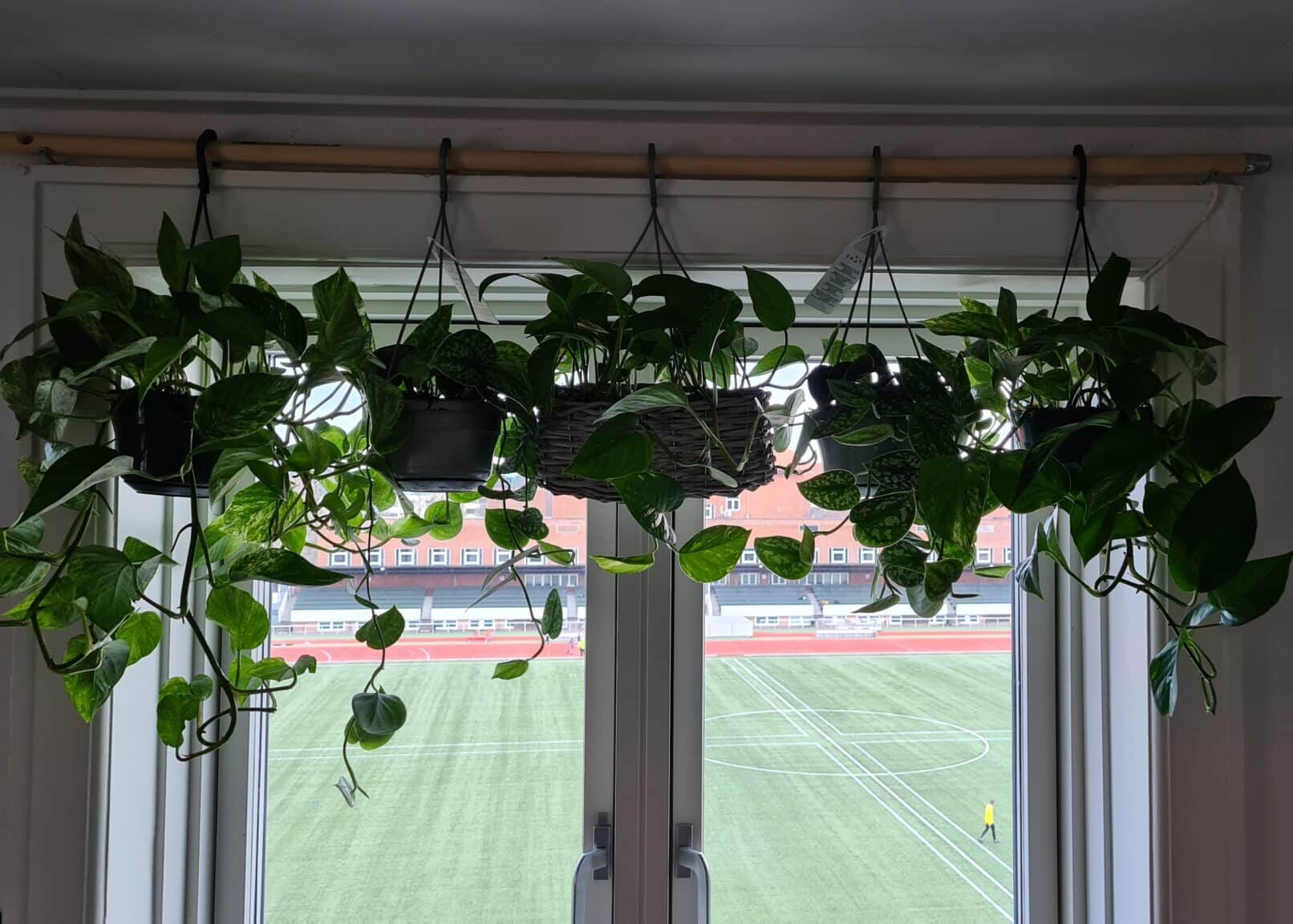
Moreover, Pothos works as a wonder for decorating your house, providing fresh air to breathe by absorbing harmful gases.
Now let’s directly dig into the varieties of Pothos that may help your home look more decorated.
Table of Contents Show
How Many Rare Pothos Are There?
Pothos has more than 36 varieties in the genus Epipremnum family Araceae. Among them, Pothos lover loves to grow around 25 types of rare Pothos varieties in their home.
Every rare Pothos has its unique character, but the leaves with variegation, like Marble Queen Pothos, Silver Satin Pothos, and N-joy Pothos, attract me more.
Similarly, Pothos’ waxy heart shape, thick with relatively straight leaves and thick petioles, gives it the title of an ideal houseplant.
22 Rare Pothos With Picture and Name
Native to China, the Indian Subcontinent, Australia, and various islands of the Pacific and Indian oceans, Pothos is welcome to several house interiors ranging from hanging baskets to decent corner decor.
Although Pothos has a wide range of variety, I have curated a list to guide you on what rare Pothos you can choose from many.
Let’s begin!
1. The Golden Pothos
The Golden Pothos (Epipremnum aureum), commonly known as Devil’s Ivy or Ceylon creeper, is native to Southern Asia.
As the name suggests, this Pothos variety has golden variegation with heart-shaped and glossy leaves.
Golden Pothos can grow anywhere from 20 cm to 2m indoors.
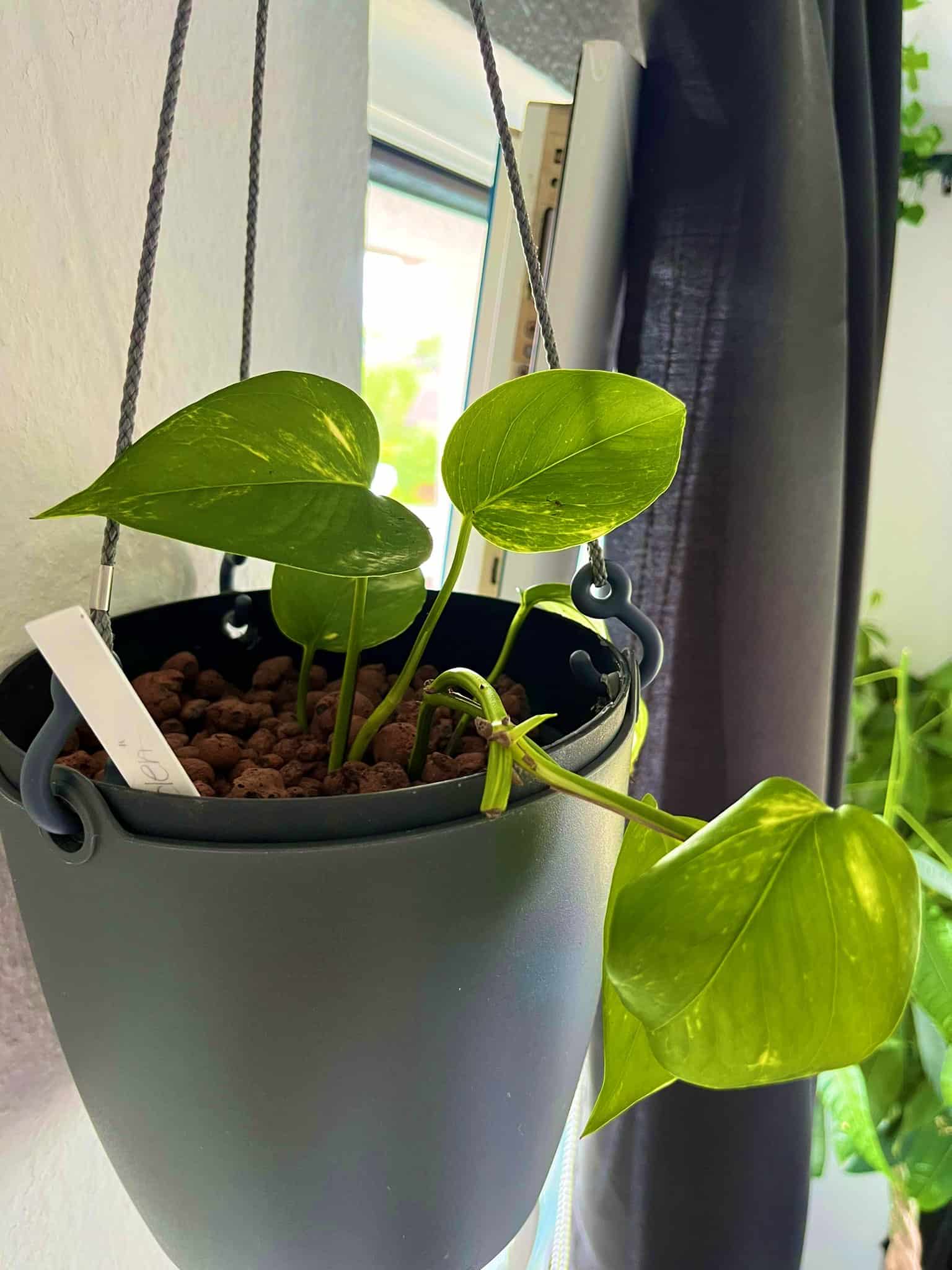
It can take 12 inches per month under average growing conditions with the help of aerial roots, ornating your surroundings.
Golden Pothos bloom rarely, and a study in 1964 is the only record that shows these Pothos have flowers.
According to NASA Air Study, Golden Pothos can purify the air by excluding toxins, including trichloroethene, formaldehyde, toluene, benzene, xylene, carbon monoxide, and dust.
2. Neon Pothos
The Neon Pothos (Epipremnum aureum ‘Neon’) comes from French Polynesia and thrives in tropical places in the Solomon Islands.
You would love to have this variety of rare Pothos inside your house for its chartreuse neon-colored leaves.
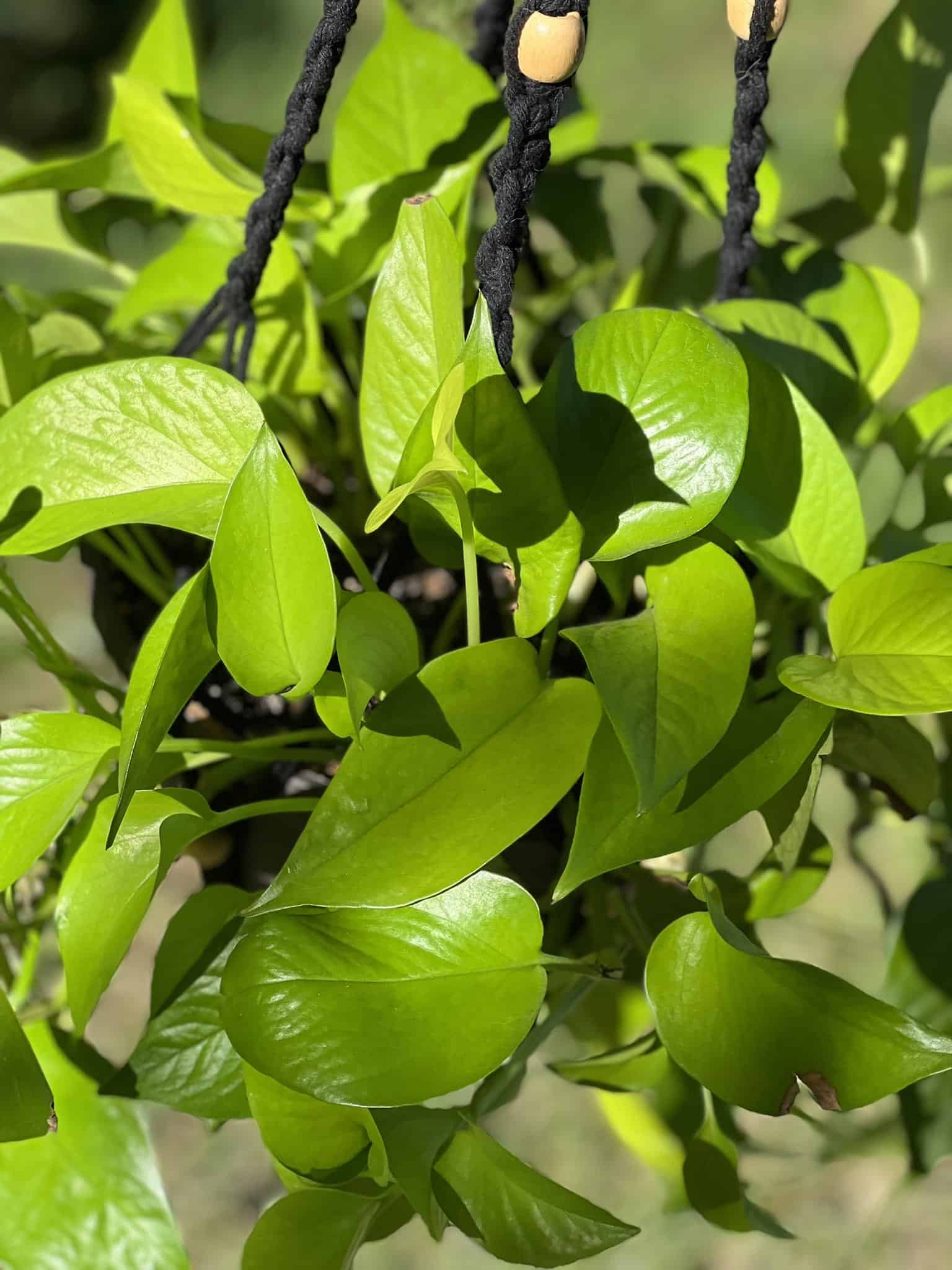
Furthermore, being a fast-growing plant, it can attain a height of 40 ft. in its natural environment with a growth rate of 12-18 inches per month.
It is impossible to observe flowering indoors, but it can allow you to enjoy its flowers in their natural habitat.
3. Marble Queen Pothos
The third on the list is Marble Queen Pothos (Epipremnum aureum ‘Marble Queen’), which boasts natural habits in French Polynesia, Southeast Asia, and Australia.
They are one of my favorites for their beautiful white variegation on their leaves, realizing the definition of beauty.
The leaves of Marble Queen Pothos lack chlorophyll, giving equal variegation of white with green leaves.
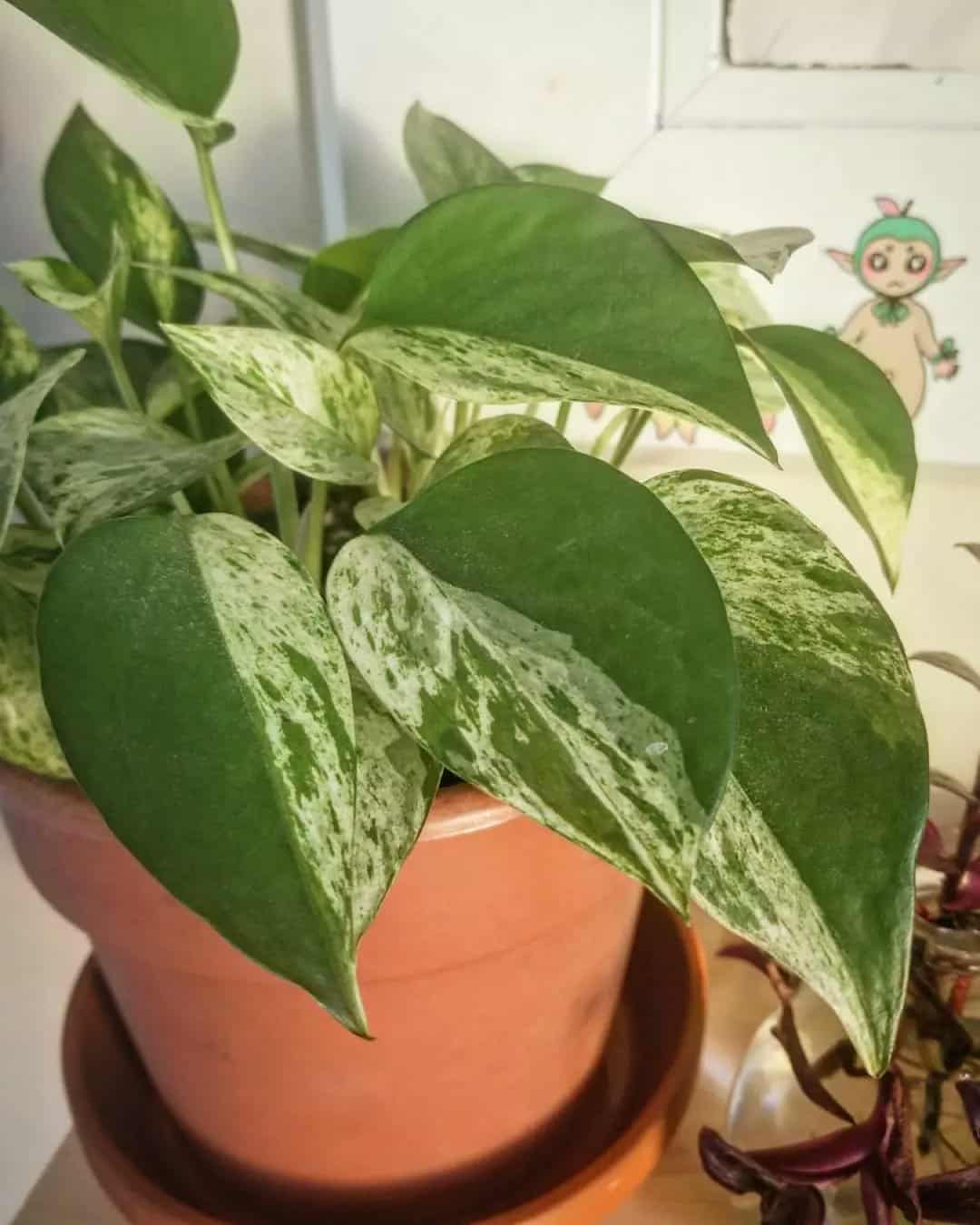
As this Pothos lacks chlorophyll leading to slow growth, it can grow up to 6 ft under proper care.
Flowering is absent in indoor situations, but Marble Pothos can bloom outdoors when the plant attains a length of around 40 ft.
4. Manjula Pothos
One of the rare pothos varieties is Manjula Pothos (Epipremnum aureum ‘Manjula’), patented by the University of Florida in 2010, while some argue it originated from India.
You can observe the combination of splashed white and cream patches over the green in the Manjula Pothos.
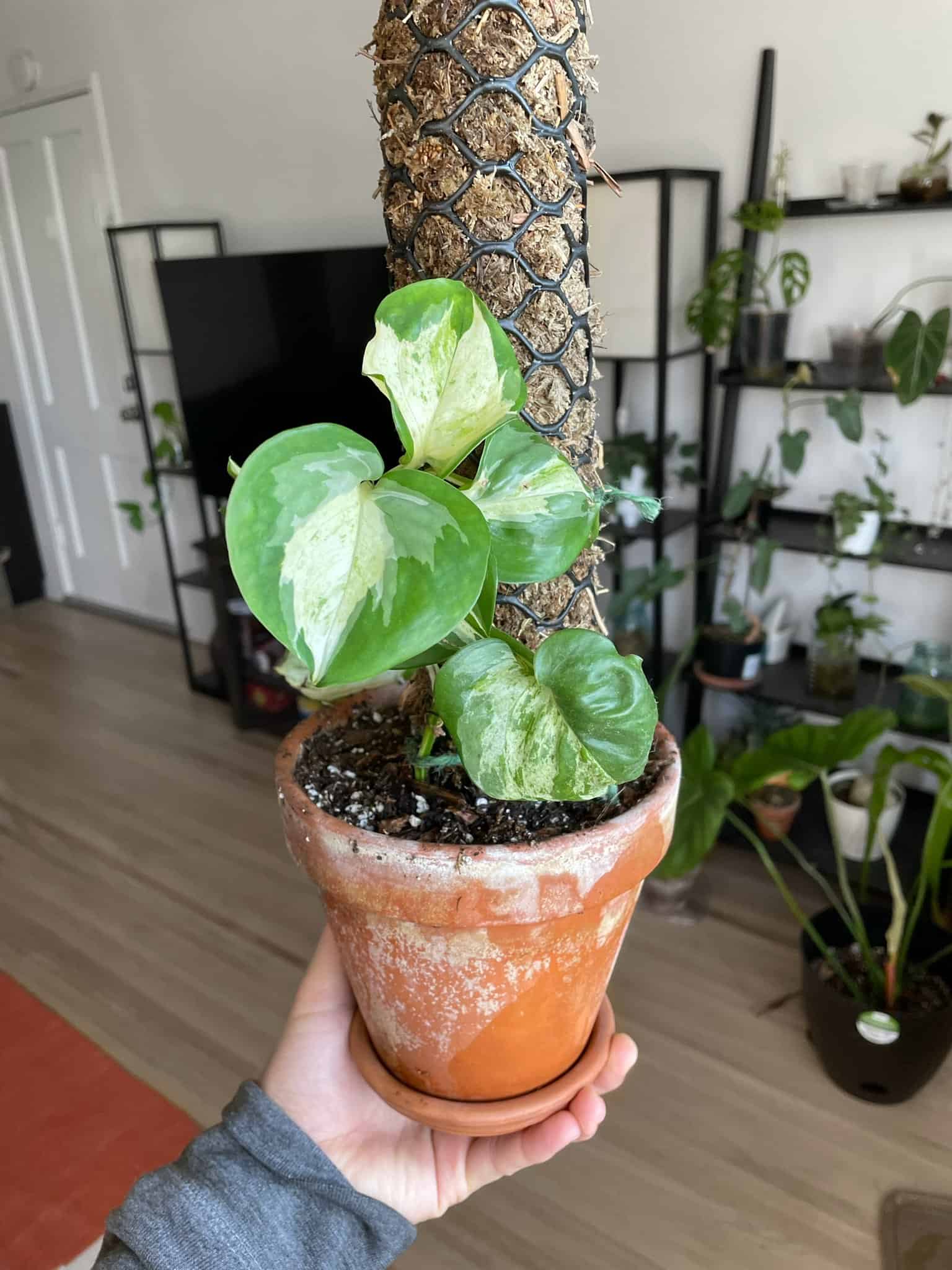
The leaves are large with heart-shaped structures and wavy edges, leveraging any gardeners who love a white or cream splash in the green leaves.
The plant can offer a height of 6 ft indoors and shows the trailing appearance climbing in the poll.
It has a slow pace of growth with a range of 8-12 inches per month, making it the ideal houseplant for people who bother pruning.
Like other rare Pothos, Manjula Pothos also lacks a blooming profile.
5. N’joy Pothos
Many gardeners mistake N’joy Pothos for Marble Queen Pothos or Snow Queen Pothos, but it is different.
N’joy Pothos (Epipremnum aureum ‘N’joy’) is a native of Australia and Southeast Asia and a new member of the Pothos family.
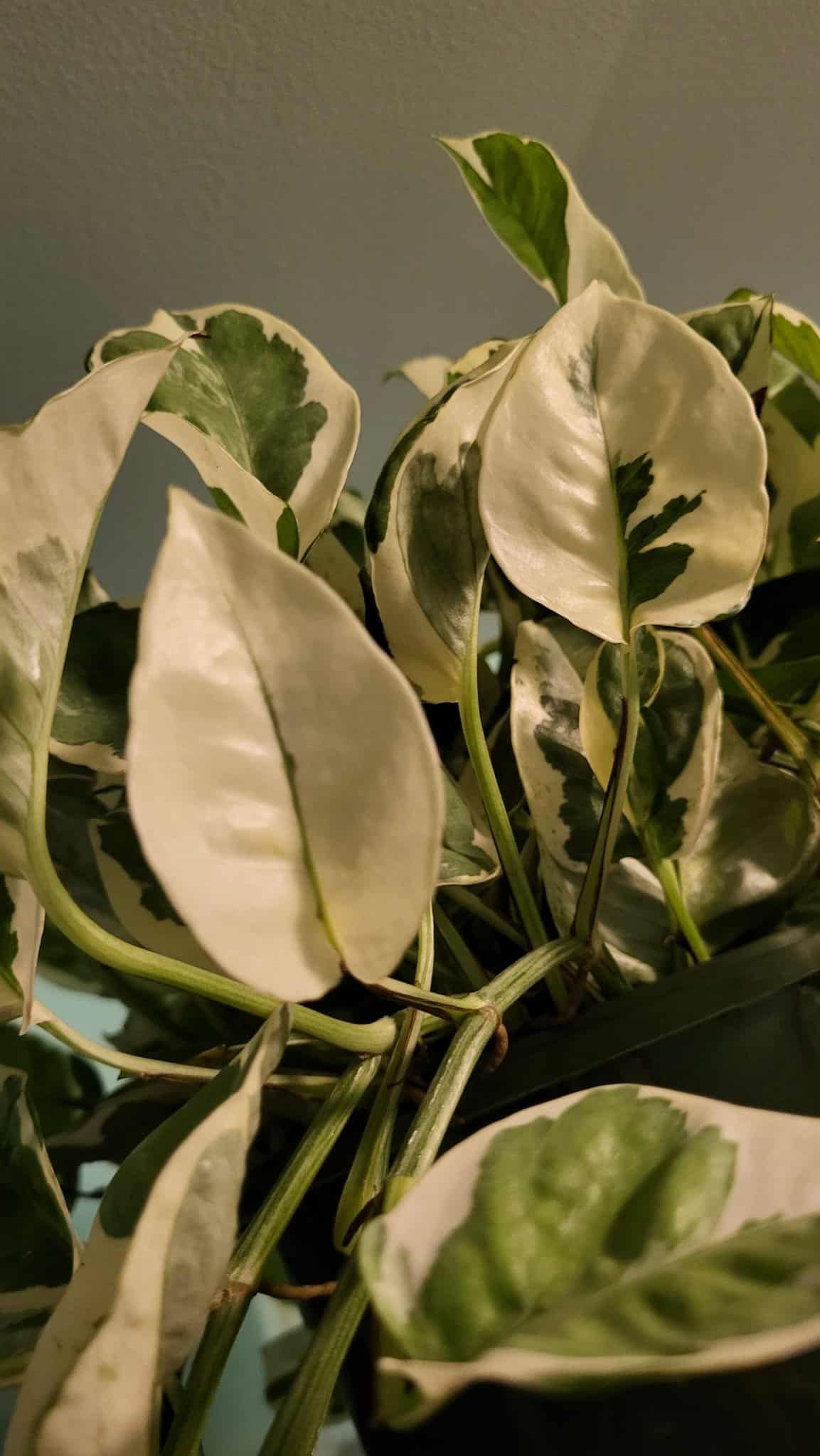
Also, N’joy Pothos leaves are comparatively smaller and bushier. The plant attains a height of up to 10 ft indoors and up to 50 ft in the wild.
This variety’s growth rate is slow due to a lack of chlorophyll, just like its mother, Marble Queen Pothos.
Flowering is only possible when the variety grows in the natural environment, leaving zero possibility of flowering indoors.
6. Pearls and Jade Pothos
Pearls and Jade Pothos (Epipremnum aureum ‘Pearls and Jade’) originated from Solomon Island and are ideal plants for hanging baskets because of their bushy foliage.
It is rich in variegation with yellow underneath the leaves, faint grey stripes on the edges, with a white surface.
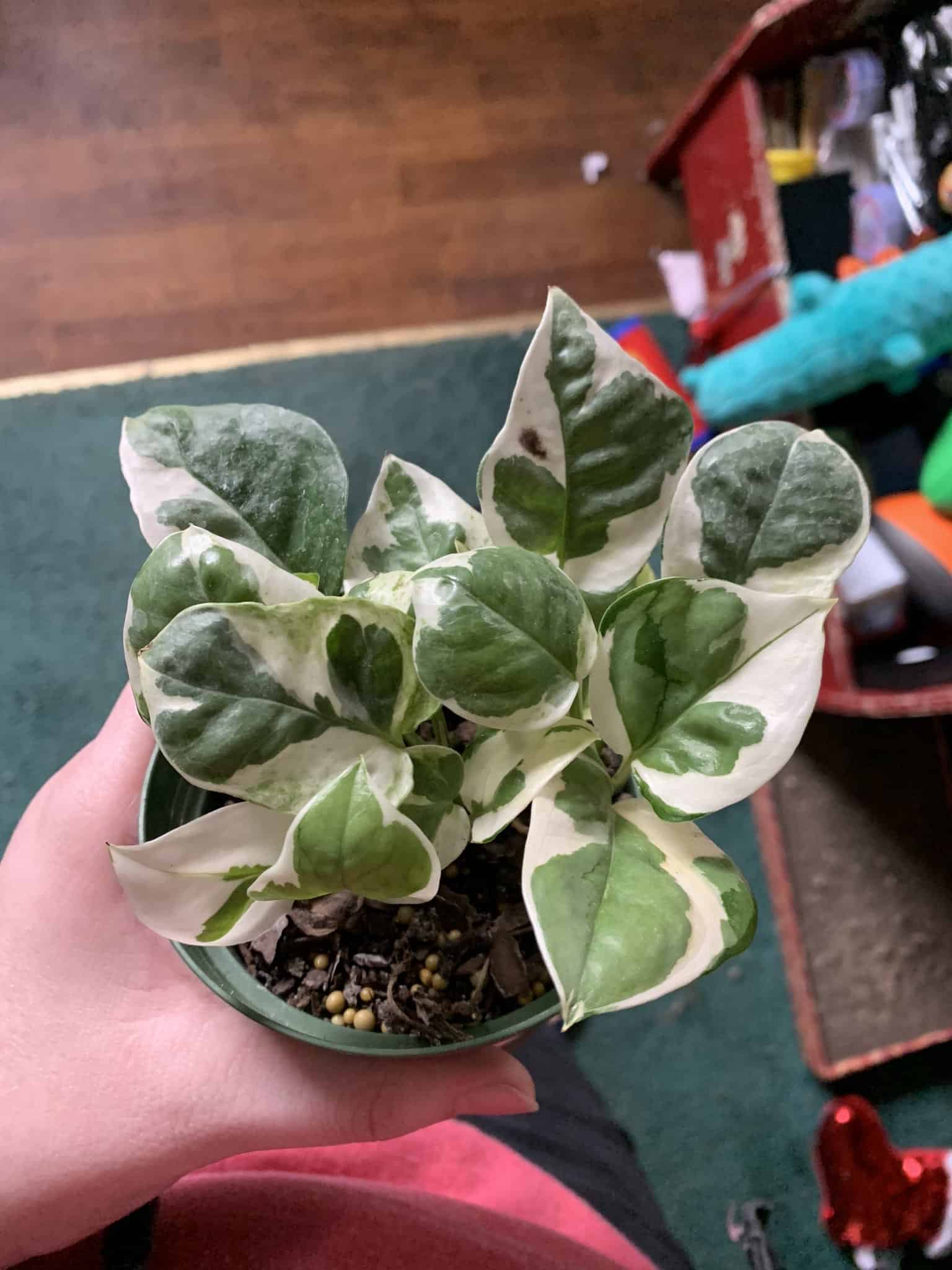
The entire plant attains a height between 6 ft and 10 ft with considerably small, waxy, and heart-shaped leaves ranging up to 6 inches.
However, you may need to wait to see the entire plant foliage as this variety has a slow growth rate due to the variegation.
Flowering indoors will never occur, but you can see its flower in the wild if you are lucky enough.
7. Jessenia Pothos
Being a new member of the Pothos family, Jessenia Pothos (Epipremnum aureum ‘Jessenia’) is a native of French Polynesia and Southeast Asia.
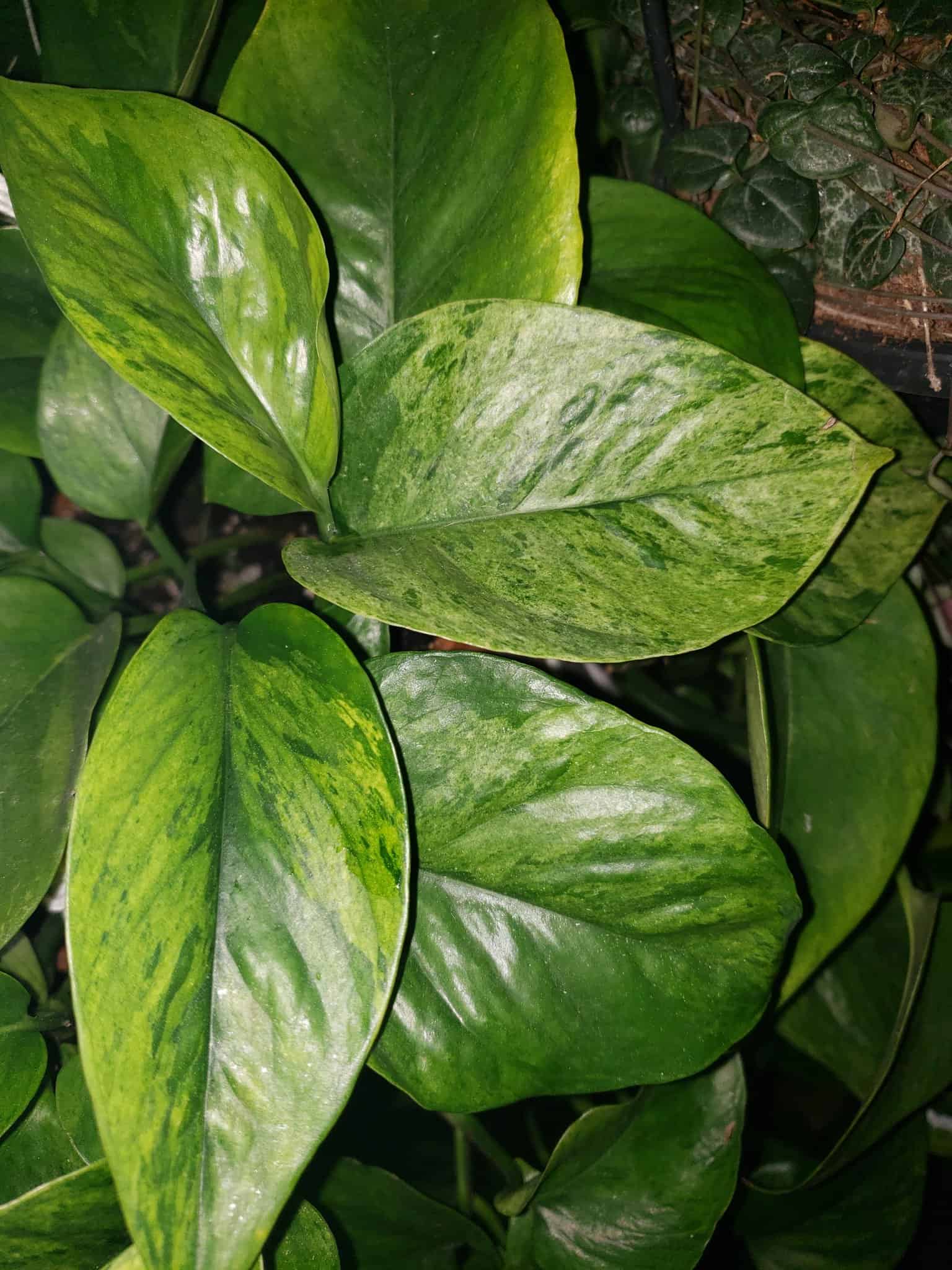
Likewise, the vine extends to a length of up to 10 ft in the indoor environment with ear-shaped, smooth, large leaves having a width of 7 inches.
This slow-grower plant has no blooms when grown indoors but can flower in the wild after reaching a height of 30ft.
8. Snow Queen Pothos
The Snow Queen Pothos (Epipremnum aureum ‘Snow Queen’), resembling Marble Queen Pothos, belongs to the natural habitat of French Polynesia.
It is welcome among houseplants for its striking whitish variegation with a ratio of white more than green.
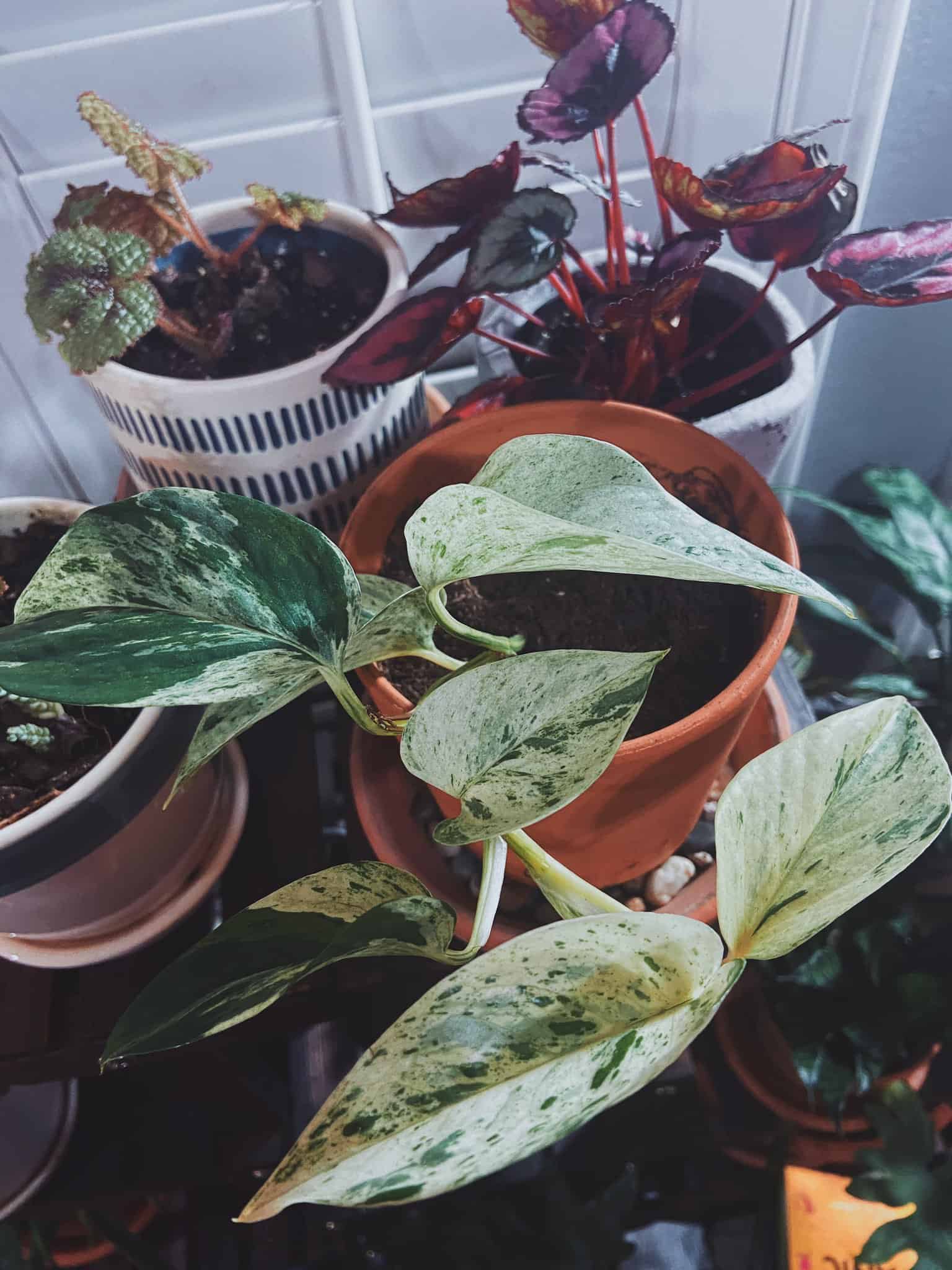
The vine enjoys a maturity length of 10 ft and offers waxy, heart-shaped, shiny leaves. These eight-inch leaves can leverage your study or guest room with a statement look.
Like other rare Pothos, Snow Queen Pothos is also a slow-growing plant and rarely blooms indoors.
Wait! Is there confusion between Marble Queen Pothos and Snow Queen Pothos? Let it get resolved.
9. Harlequin Pothos
The rarest variety, challenging to get our hands on, is Harlequin Pothos (Epipremnum aureum ‘Harlequin’).
Native to Southeast Asia, Harlequin Pothos highlights with large patches of white over green as the white variegation outcomes green, giving an eye-catching look.

Also, the variety has a wide, heart shape, teardrop-like leaves resembling Manjula Pothos, and the vines extend up to 10 ft under proper care.
It is believed that Pothos symbolizes a lucky charm that brings good health, wealth and happiness to its owners.
10. Variegated Neon Pothos
The Variegated Neon Pothos (Epipremnum aureum ‘Variegated Neon’), a rare cultivar of Pothos, is a native of French Polynesia.
You might wonder if Variegated Neon Pothos is similar to Neon Pothos, but that is not the case.

Similarly, the Neon Pothos has heart-shaped leaves and lengths extending between 6 ft and 10 ft.
Rich in chlorophyll, the plant enjoys growth ranging from 6-10 inches per month under favorable conditions.
Meanwhile, natural blooming is impossible indoors but can surprise you with creamy-white spadix flowers in the wild.
11. Cebu Blue Pothos
The tropical rare Pothos variety, Cebu Blue Pothos (Epipremnum pinnatum ‘Cebu Blue), is native to Southeast Asia, earning its name from the Cebu island of the Philippines.
As a unique variety, Cebu Blue has shiny, silvery blue leaves which sparkle under suitable light conditions.
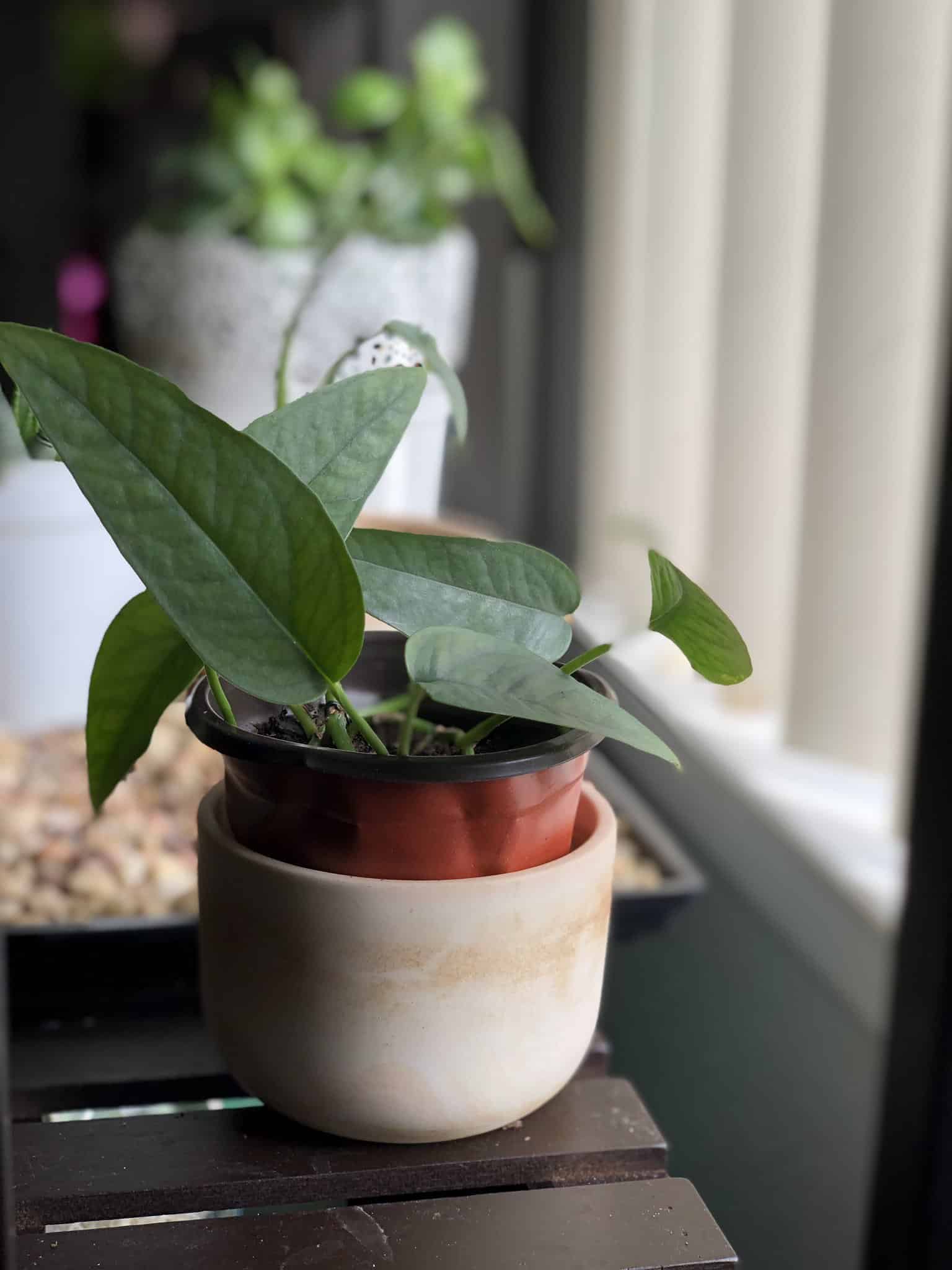
The leaves go under two growth phases, with thin, elongated oval-shaped leaves in the juvenile phase, while attaining the mature stage is rare indoors.
The foliage tends to reach a height of 8 ft under proper indoor conditions and 40 ft in the wild.
Besides, Cebu Blue Pothos can obtain a growth rate of 4 to 6 inches per month, changing itself into a trailing vine.
12. Hawaiian Golden Pothos
Wondering if many Pothos are native to French Polynesia? To surprise you, Hawaiian Golden Pothos (Epipremnum aureum ‘Hawaiian’) is now another on the list.
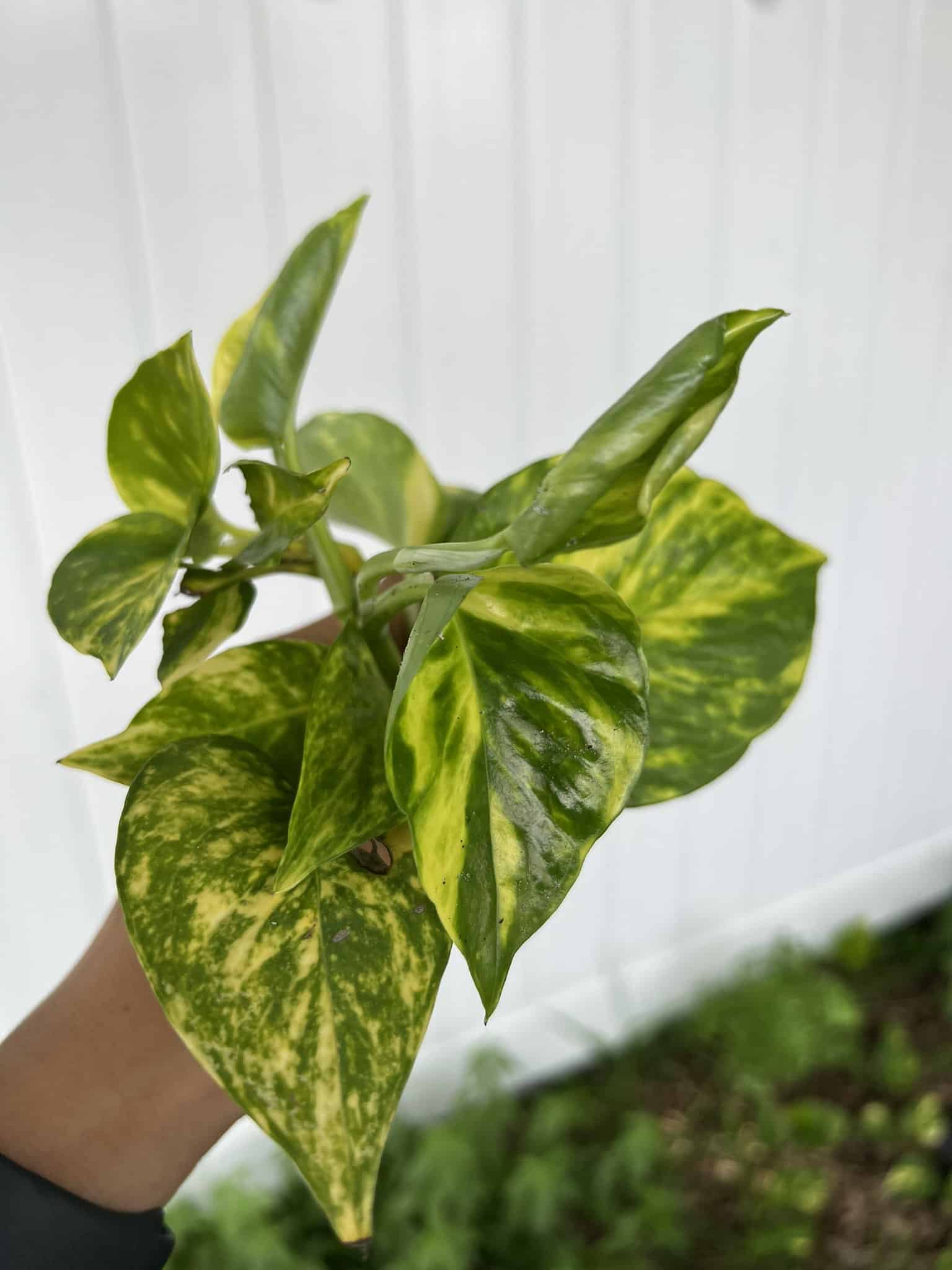
The leaf has a more curvy base with pointed tips in a heart shape structure and can take up a giant look under proper light conditions.
The indoor Hawaiian Pothos can reach a height of 6ft to 8 ft with a growth rate of 1 ft per growing season.
But do not expect the Hawaiian Pothos to bloom indoors. You can enjoy the variety’s lush foliage and decorate your house.
13. Treubii Pothos
The native of the dense rainforest of Southeast Asia, Treubii Pothos (Scindapsus treubii), stands for a house plant with low maintenance.
Treubii Pothos’s ‘Moonlight variety’ has a silvery green look without any variegation in its leaf.

While another variety, ‘Dark Form,’ has dark green leaves, appearing nearly as black.
The Treubii Pothos has a long, elongated, lance-shaped leaf that extends 4 to 20 inches in a well-maintained indoor environment.
The foliage extends 6 to 8 ft long with a 1 to 2 ft width with a rapid growth rate due to the lack of variegation.
Indeed, the flowering pattern of Treubii Pothos is the same as that of other Pothos, without any bloom indoors, but it is possible in its natural habitat.
14. Green Dragon Pothos
One of the hardy varieties of Pothos is Green Dragon Pothos (Epipremnum aureum ‘Green Dragon’).

The foliage falls from the top as a hanging plant or climbs up on a pole, extending its length from 4 ft to 5 ft under natural conditions.
Like any average growing Pothos, Green Dragon Pothos enjoys a monthly growth rate of 7 to 8 inches.
Besides, the plant has glossy, heart-shaped leaves that follow an alternate pattern.
15. Glacier Pothos
Another variety on the list is Glacier Pothos (Epipremnum aureum ‘Glacier’) which belongs to the natural habitat of Southeast Asia.
The leaves of Glacier Pothos boast a beautiful shade of silvery-white streaks on the front, with dark green on the underside of the leaves.
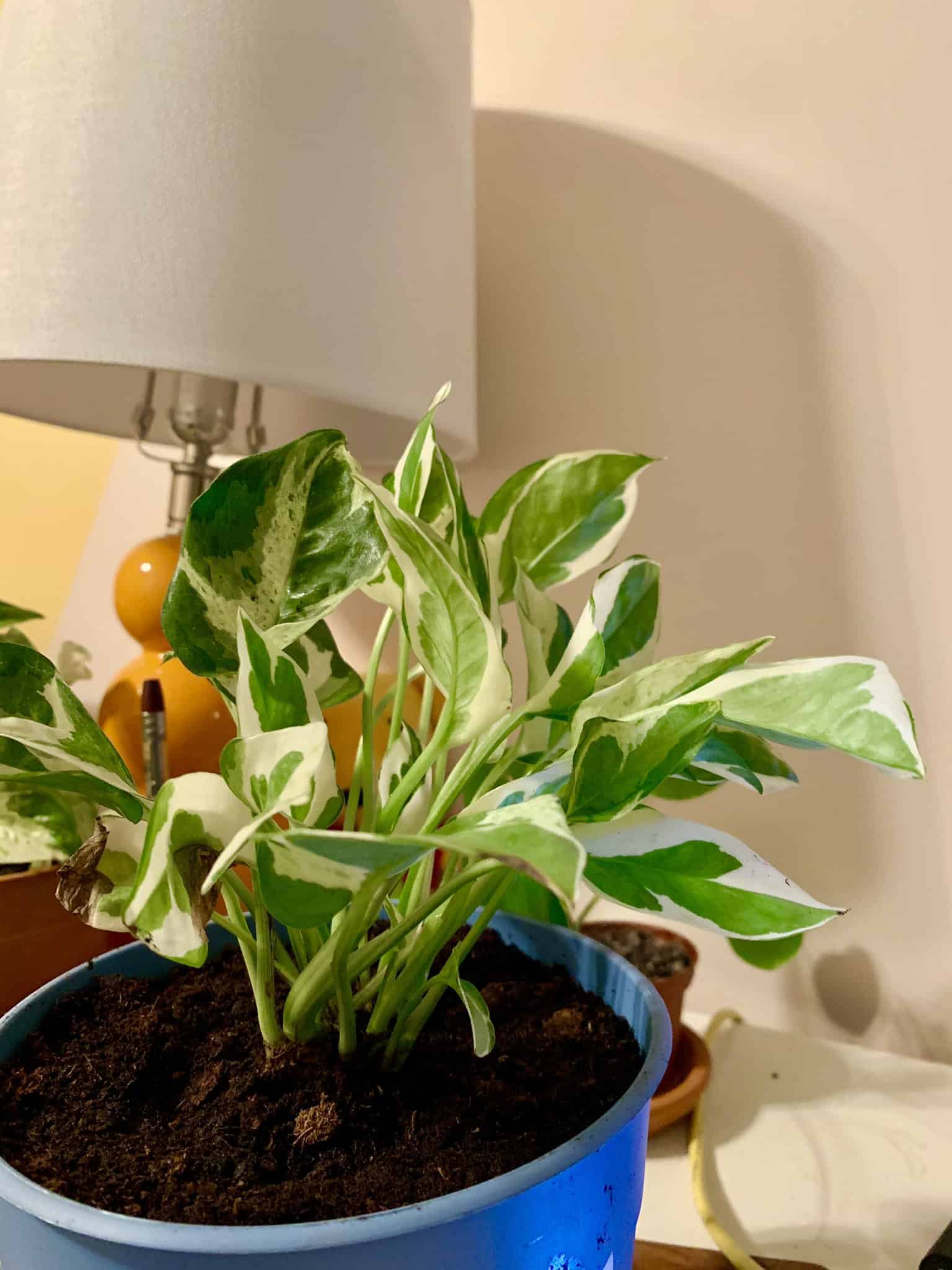
These leaves have the same structure as that of N’joy Pothos but can appear small and less ovate with fewer sharp tips.
These leaves can grow up to 1.5 inches in size, and the plant extends up to 6 to 7 ft indoors.
Also, in the case of Glacier Pothos, you will not get the chance to enjoy flowering indoors.
16. Global Green Pothos
Global Green Pothos (Epipremnum aureum ‘Global Green’) flourishes mostly in the tropical region of Southeast Asia.
The variety has blotched leaves with a combination of dark green to light green giving a luxurious, classy look to your guest room.
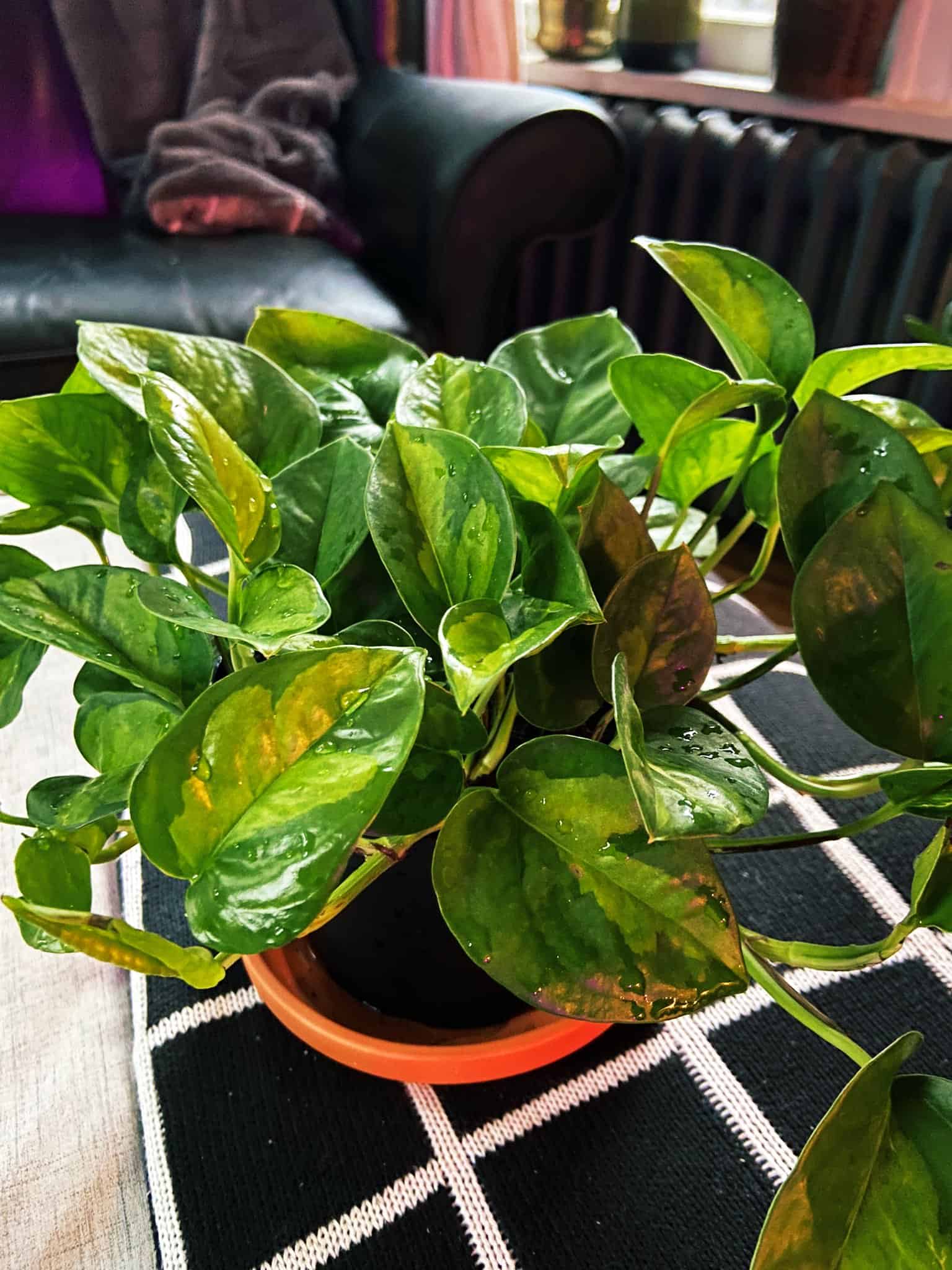
Furthermore, the leaves are curvy, heart-shaped, glossy, and petite in size, making a suitable plant for your hanging pot.
The plant obtains a height of 10 ft in the outdoor natural environment but is relatively minor while grown indoors, reaching 3 to 4 ft with a moderate to fast growth rate.
17. Silver Satin Pothos
Another rare variety of Pothos, Silver Satin Pothos (Scindapsus pictus ‘Silver Satin’), emerges from the tropical rainforest of Asia.
You will love the plant for its beautiful marble spots of silver variegation over the dark green leaves.
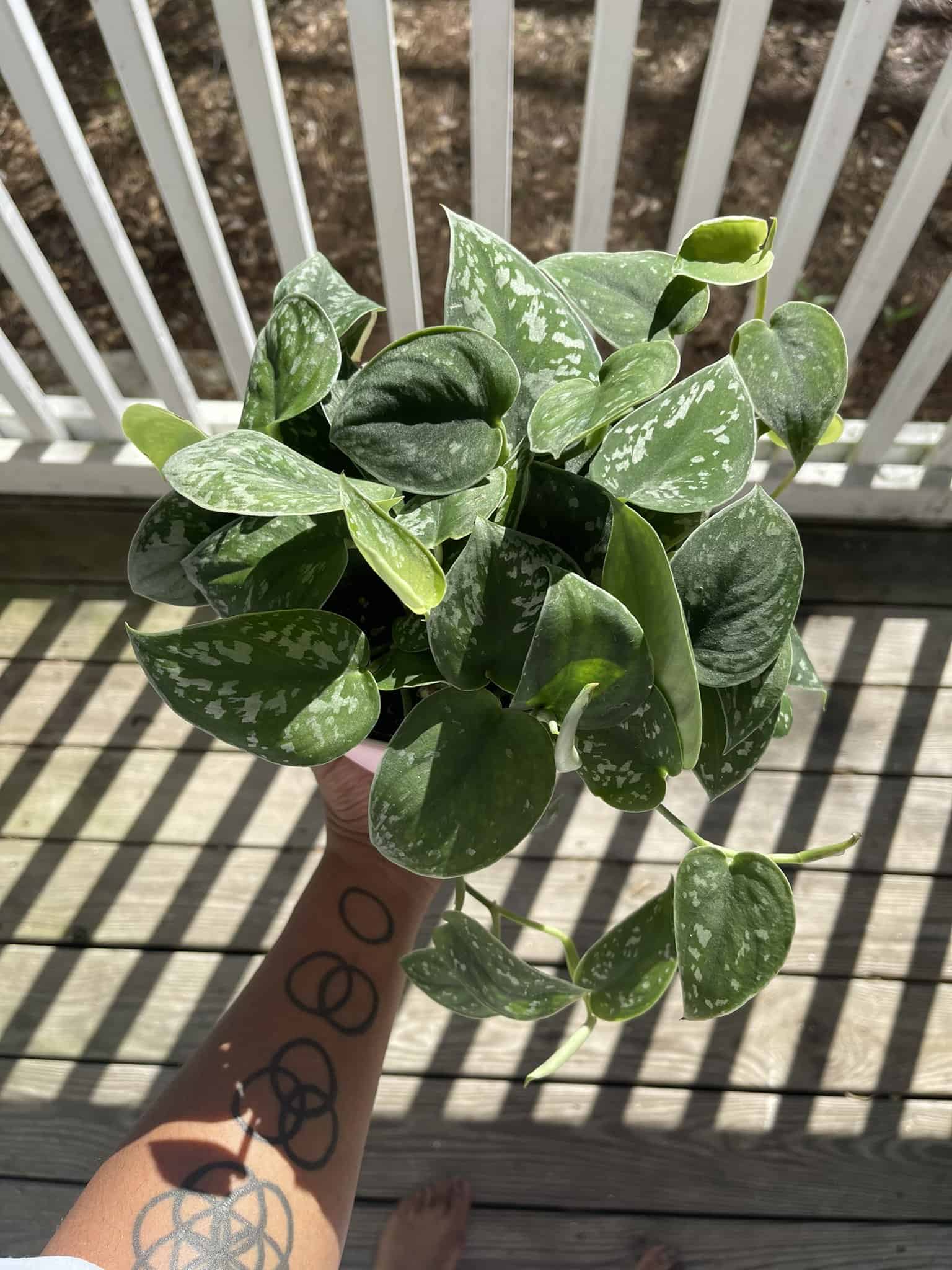
Identifying the Silver Satin Pothos will not be difficult as its ovular, heart-shaped leaves have spots instead of streaks or scattering.
Besides, the plant grows slowly compared to other varieties in the potted condition, and it can attain around 10 ft if provided with good care.
Flowering is rare for every variety of Pothos, and so is for Silver Satin Pothos in the indoor environment.
18. Emerald pothos
Another rarest variety of Pothos is the Emerald Pothos (Epipremnum aureum ‘Emerald’), a native of Southeast Asia, including China and the Pacific Islands.

Besides, the Pothos also has beautiful heart-shaped leaves with trailing stems up to 10 ft long indoors.
In addition, the growth rate takes up from moderate to fast and needs repotting every 2-3 years for better growth.
However, you might need to wait forever if you are flower lovers since flowers do not bloom indoors.
19. Jade Pothos
Jade Pothos (Epipremnum aureum ‘Jade’) is a native of Southeast Asia and French Polynesia.

Furthermore, the leaves show a thick, shiny, and dark green feature with a sturdy stem allowing the pant to obtain a length of 30 ft and even longer in the wild.
According to ACADEMIA, Epipremnum aureum is rich in alkaloids, flavonoids, and other phenolic components which are beneficial to pharmaceutical uses.
20. Skeleton Key Pothos
Skeleton Key Pothos (Epipremnum pinnatum ‘Skeleton Key’) is a native of the Tropical rainforest of Asia and the Pacific, resembling a skeleton-like leaf pattern.
The leaves of Skeleton Key Pothos lack variegation over their leaves but signify their presence with a green, glossy, and thick look.
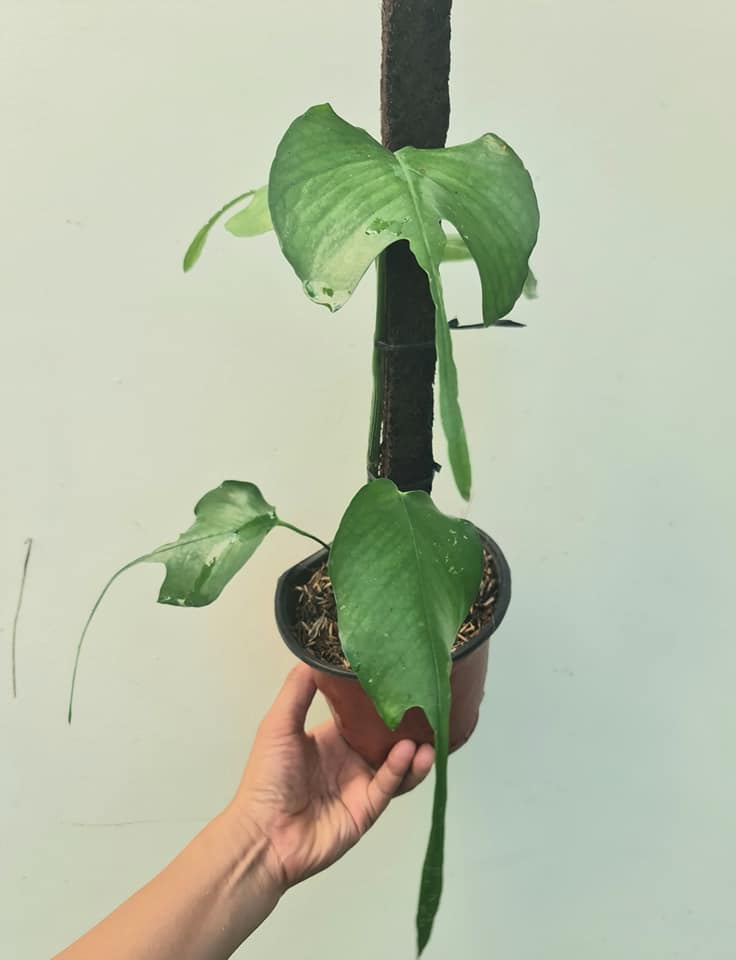
However, some pothos lovers argue that Skeleton Key is not Pothos because of its leaf structure.
Still, the leaves resemble Pothos in the juvenile stage and later show a sting rays pattern where the part near the stem is wider with long pointed tips.
Under ideal conditions, the variety can take up a monstrous look, with the length extending up to 10 ft, signifying a rapid growth rate.
21. Shangri La Pothos
The rare pothos variety Shangri La Pothos (Epipremnum aureum ‘Shangri La) is an inbred variety of Golden Pothos and receives another common name, ‘Sleeping Pothos.’
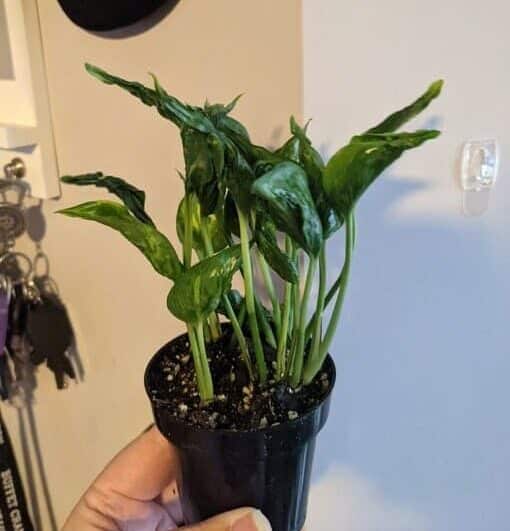
The leaves display a beautiful glossy green color with light yellow variegation.
The variety tends to attain a slow to moderate growth and extends 6-8 ft when grown outdoors but about 3-5 ft indoors.
22. Silvery Ann Pothos
A native of Southeast Asia, Silvery Ann Pothos (Epipremnum pictum ‘Silvery Ann’) resembles the Silver Satin Pothos, but not entirely.
The leaves have white variegation over the green with a ratio of 50-80 to 50-20, providing a beautiful silvery look.
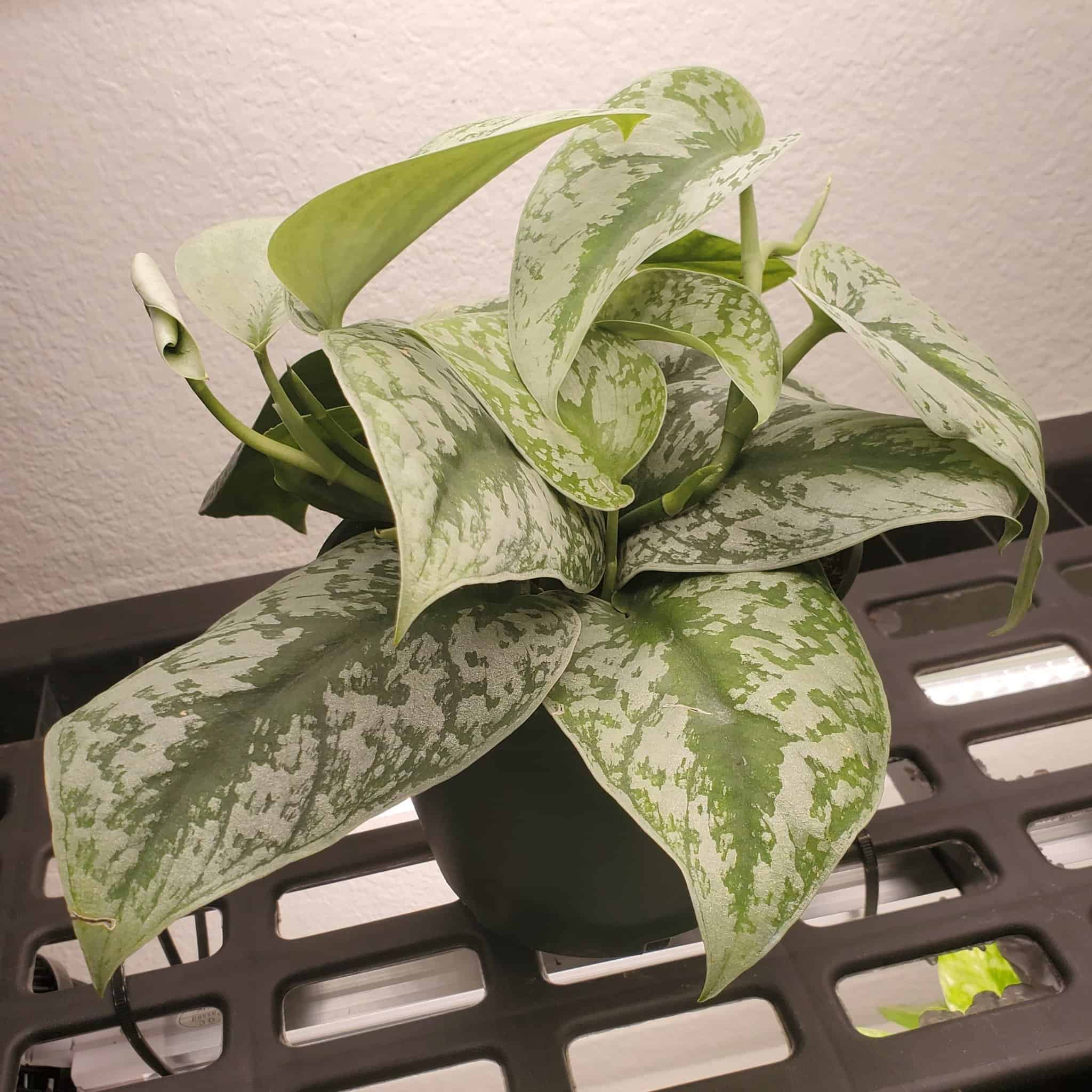
Also, the leaves are smaller in heart shape and have thick, pointed edges.
Due to its variegation, the plant has less area to process chlorophyll leading to medium growth, with the average length extending to 6 ft.
Although being a flowering plant, this Pothos will not allow you to relish its flower if you grow it indoors.
Some More Varieties of Pothos
Besides the above, you may also need to consider the following rare Pothos.
| Varieties | Maximum Growth Size | Features |
|---|---|---|
| Baltic Blue Pothos | Height: 6 feet | Pointed, heart-shaped, dark green-blue leaves with fenestrations at mature stage. |
| Exotica Pothos | Height: 3 feet | Heart-shaped, oval, velvety-dark green leaves with silvery patches. |
| Argyraeus Pothos | Height: 3 to 10 feet | Leathery, heart-shaped, green leaves with silvery-grey blotchces in edges. |
| Silver Leaf Pothos | Height: 6-7 feet | Oval, long, striped, pointed tips with blue-grey variegation over green. |
Tips to Care for Rare Pothos Plant
If you want to populate Pothos to turn them into the mini jungle, Pothos propagation can help you begin with the root nodes.
Whether it is the newly propagated Pothos or adult, you need to make the following care requirements.
- Direct sunlight harms your Pothos and demands indirect medium to bright light for 10 and 12 hours daily.
- Grow lights will also help you get the optimum light conditions if you reside in snowy areas.
- Humidity should be between 70-85% to attain proper growth of the Pothos.
- Being a tropical plant, Pothos loves warm temperatures ranging from 16°C to 26°C.
- Water the Pothos every 1 to 2 weeks after checking the moist level 2 inches from the ground.
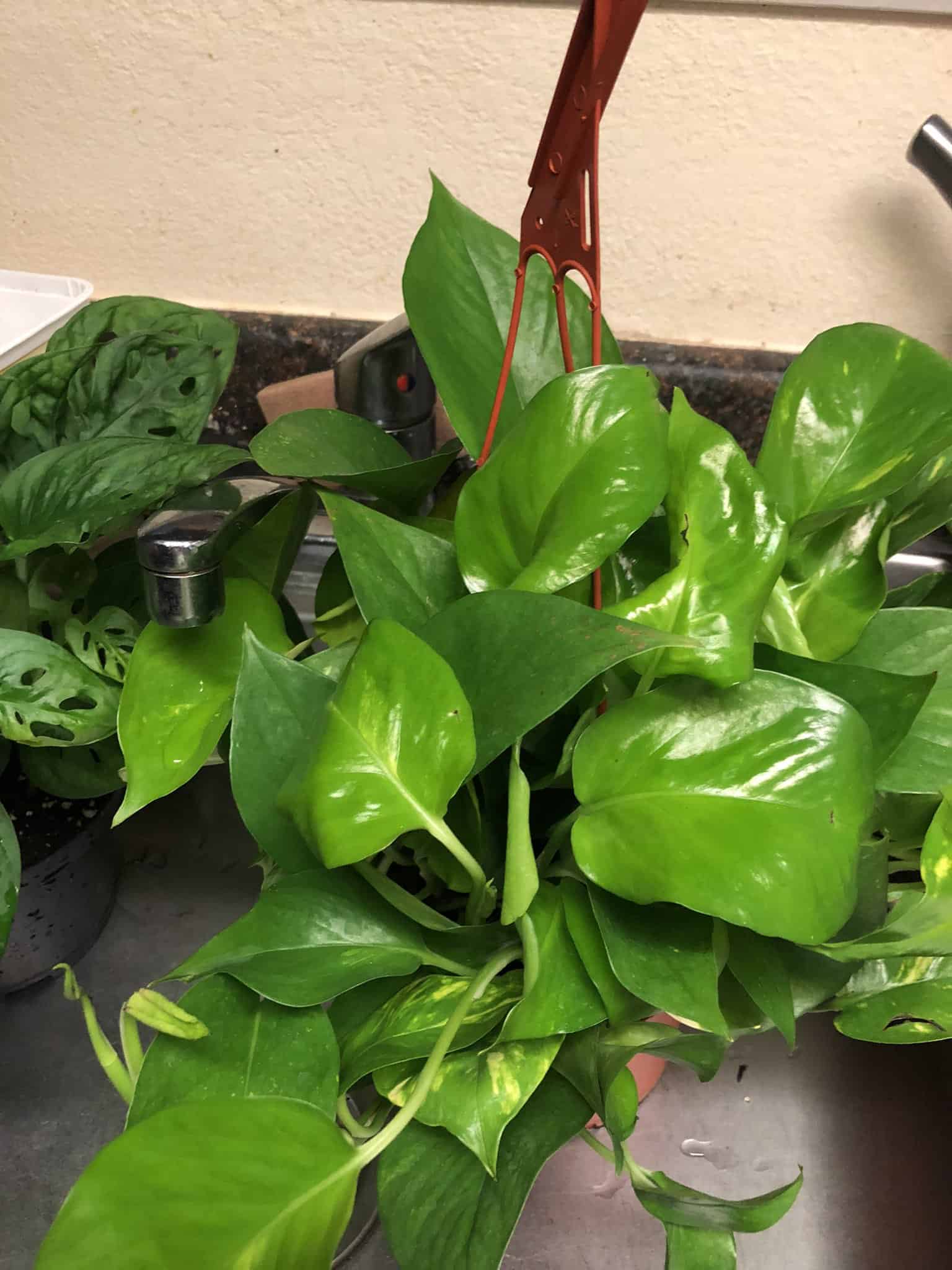
- Slightly acidic to neutral, well-aerated, and well-drained soil ranging from 6.1 to 6.5 pH works wonders for the Pothos.
- Pothos do not demand regular fertilizers and can work well with all types of fertilizer, but liquid fertilizers are easy to absorb, so apply them once every three months.
- Pothos can outgrow their containers or pot, so repotting should be done every one to two years.
- Timely pruning helps Pothos to attain a reasonable length, so prune in the growing season during summer.
To Conclude
Also known as a ‘Money Plant’ in most Asian countries, Pothos is the most reliable and worthy indoor houseplant.
With the available varieties, the popular Pothos can fill your house with its extending foliage and reduce your anxiety level.
I have provided you with 22 rare Pothos varieties to decorate, so feel free to invite them and enjoy the plantsmen lifestyle.


